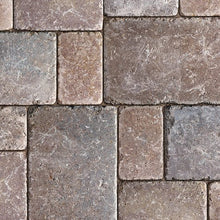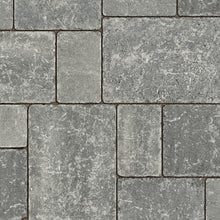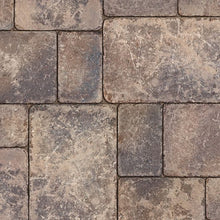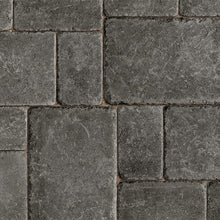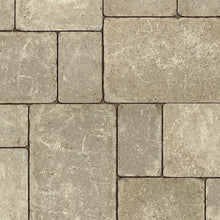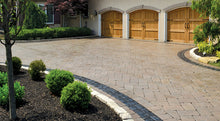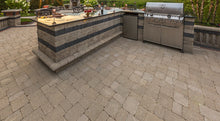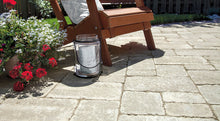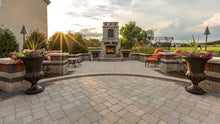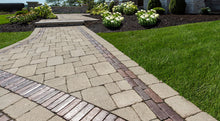
Brussels Pavers Series:
Sold By The Sq Ft
Available in 5 Different Colors: Coffee Creek, Limestone, Mahogany Ash, Sandstone and Desert Sand(WSL)
Available in 3 Different Sizes:
SHAPE AND SIZE

4" x 6 7/8" x 2 3/4"

6 7/8" x 8 1/4" x 2 3/4"

8 1/4" x 13 3/4" x 2 3/4"
95.70 Sq Ft per Pallet
10 Layers per Pallet
9.57 Sq Ft per Layer
RECOMMENDED BASE STABILIZATION – one layer of DriveGrid™" stabilization grid between subgrade and base material. Recommended depth 8” to 10” below pavers for maximum stability and performance. Use under Standard Base or Permeable Base.
STANDARD BASE – Min. 6” – 8” of ¾” Crusher Run gravel (any road base standard in accordance with ASTM-D2940) compacted to 98% Standard Proctor Density (SPD).
STANDARD BEDDING COURSE – 1” thick of coarse sand– in accordance with ASTM-D2940 screeded over base.
ALTERNATIVE PERMEABLE BASE – Min. 6” – 8” of ¾“ clear open-graded stone compacted to achieve full particle lock-up and consolidation. (Clear open-graded does not compact but does consolidate slightly by rattling the particles together.)
ALTERNATIVE PERMEABLE BEDDING COURSE – 1” thick of 1/4” clear open-graded chip stone – (ASTM No. 8) screeded over base.
SPECIAL NOTE: CONCRETE DIRECT OVERLAY – In some areas of the country and in some applications pavers are very successfully placed directly over concrete. Concrete as a base is in itself quite strong, but it can affect the structural integrity of the paver particularly in vehicular applications, where the concrete below is sub-par. The following considerations must be taken into account to insure that the concrete below the surface is ideal:
- Concrete integrity – concrete must be in good condition, and not crumbling
- Drainage slope – concrete below must be sloped away from all buildings and structures
- Drainage holes – In lowest areas of the concrete, drill 1” holes in concrete (on 12” centers) and fill holes with ¼” chip (ASTM No. 8)
- Base drainage - the area below the concrete must not be subject to frost movement
- Surface - surface must be totally smooth and flat equivalent to the desired finished surface
- Waterproofing - may be required when installing pavers over concrete where there is a basement or cold cellar below. Install an impervious rubber membrane over the surface prior to installing any pavers over the surface.
- Jointing Sand - Use an impervious polymeric sand when installing over concrete










